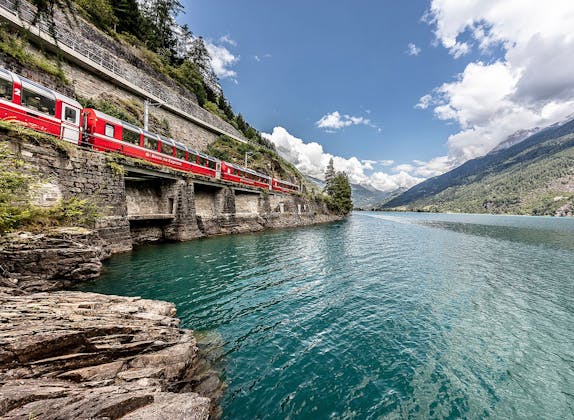
Swiss Travel Pass
Validity: All day
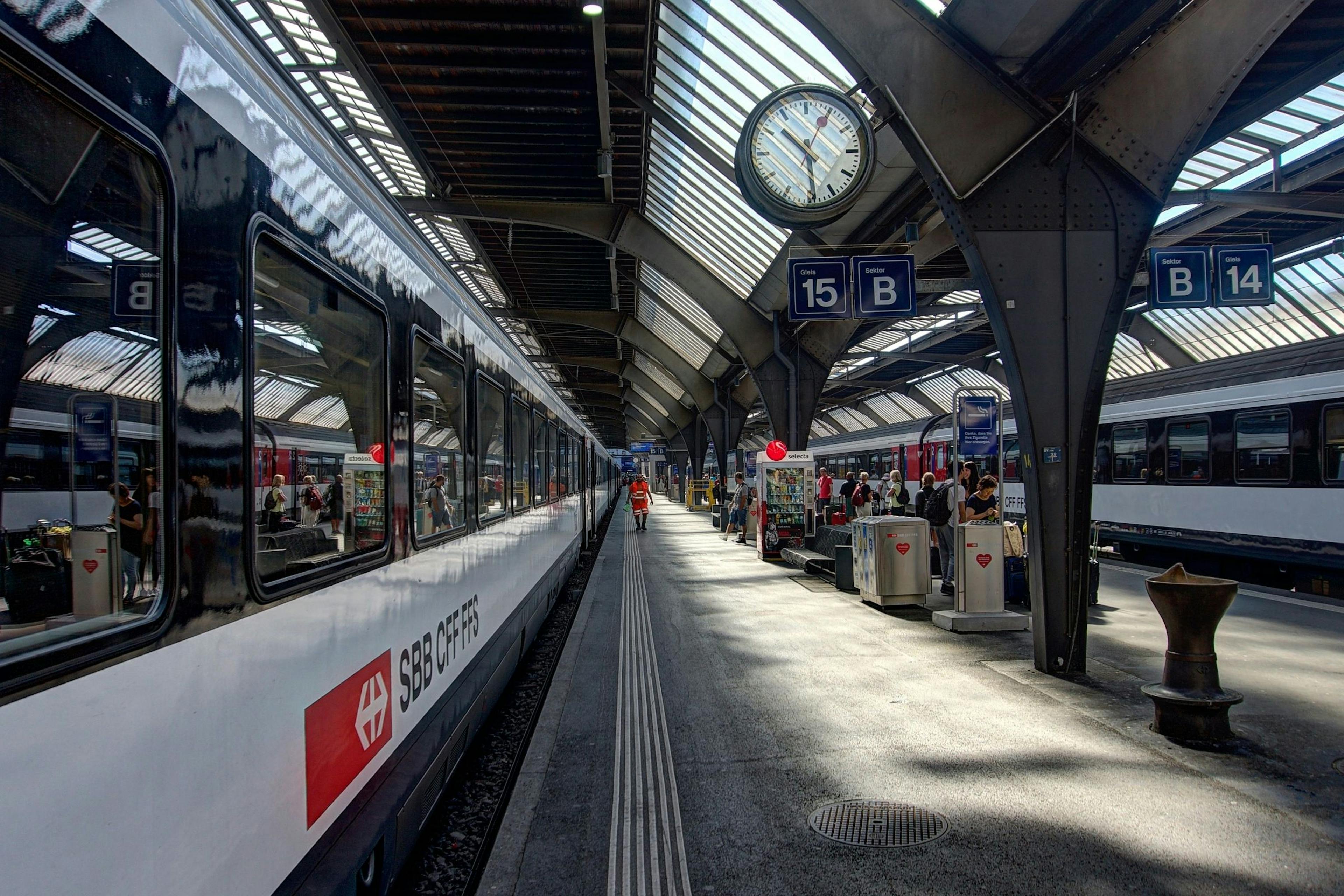
Public transport in Switzerland has one of the densest networks in the world. The railroad is the most important means of transport. There are more than 5300 km of railroad network in Switzerland. In addition, there are buses, streetcars, mountain railroads and passenger ships, with which you can easily reach almost every corner of Switzerland.
To kick off this article, let’s propose a self-made thesis. We claim that you can measure the quality of a country's public transport by how the population reacts when a train is even slightly delayed.
Or would you get upset in a country outside of Switzerland if you heard the announcement: “We are currently running three minutes late. We apologize for the inconvenience.”?
Believe it or not, here it can already lead to red faces and elevated heart rates over such a minimal delay. From the reactions witnessed repeatedly in Swiss train stations and trains, you’d inevitably conclude that public transport in Switzerland must be phenomenal.
And there’s definitely some truth to that.
In hardly any other country is the public transport network as dense and well developed as it is in Switzerland. That’s why this article will focus entirely on public transport, while further articles will provide detailed information on the available train tickets in Switzerland and tourist passes for your train journey in Switzerland.
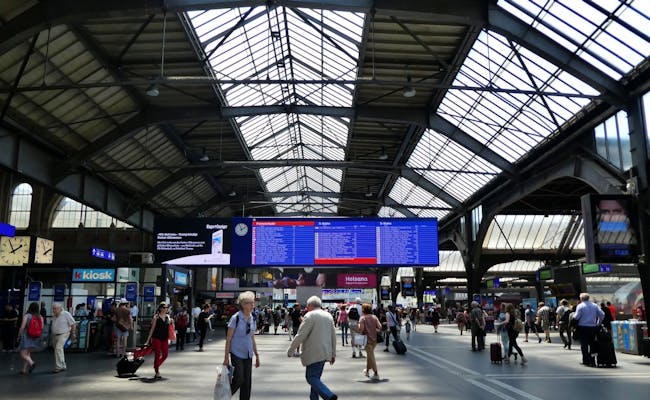 Zürich Central Station (Photo: Seraina Zellweger)
Zürich Central Station (Photo: Seraina Zellweger)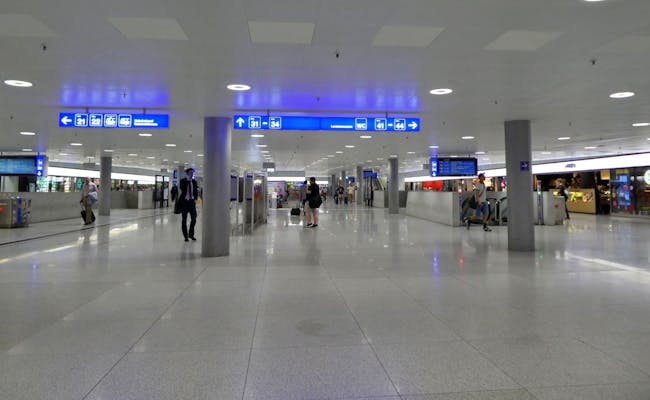 Zürich Tiefenbahnhof (Photo: Seraina Zellweger)
Zürich Tiefenbahnhof (Photo: Seraina Zellweger)When it comes to train travel, Switzerland is a country of superlatives.
No country in Europe covers as many kilometers by rail as the Swiss do. In 2019, we traveled an impressive 2,400 km per person. That's roughly the distance from Rome to Stockholm or from Vienna to Madrid.
Additionally, since 2016, Switzerland has proudly owned the longest railway tunnel in the world: the Gotthard Base Tunnel. This engineering marvel replaced Japan's Seikan Tunnel, which held its record for 28 years. Thanks to the Gotthard Base Tunnel, the travel time between Zurich and Lugano has been reduced by 30 minutes, which is about a 20% decrease.
The largest player in the Swiss railway universe is the SBB, short for Swiss Federal Railways. Of the total Swiss railway network, which spans over 5,300 km, the SBB operates a significant 3,236 km. However, the SBB is not alone in the field. In 2015, 73 other railway companies were also transporting passengers from Geneva to St. Gallen, from Lugano to Basel, and on all routes in between.
Swiss Activities Tip: Switzerland is not only known for its many trains but also for its beautiful landscapes. Fortunately, these two can be perfectly combined through scenic trains. Read more about the 5 most beautiful scenic trains in Switzerland.
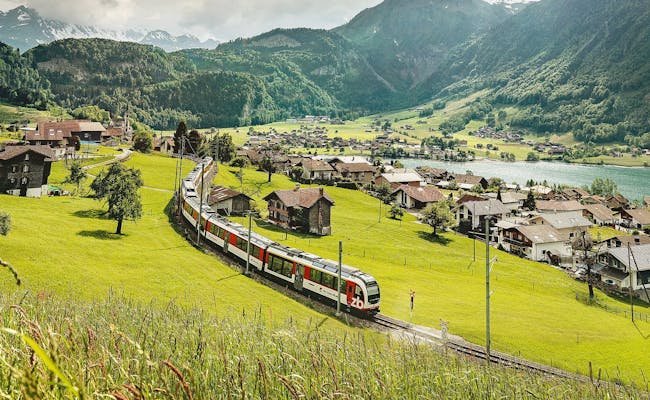 Traveling by train in Switzerland (Photo: Swiss Travel System)
Traveling by train in Switzerland (Photo: Swiss Travel System)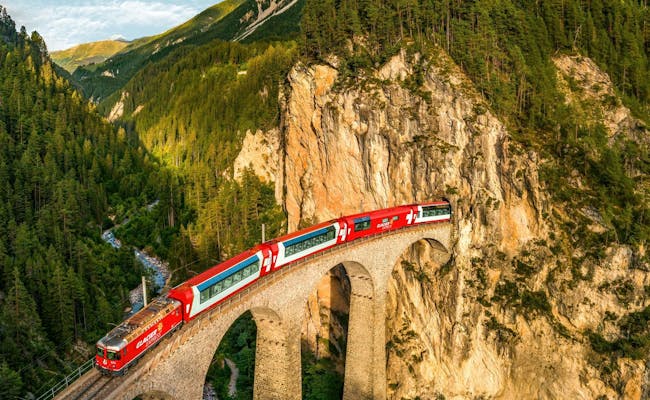 Landwasser Viaduct in Graubünden (Photo: Swiss Travel System)
Landwasser Viaduct in Graubünden (Photo: Swiss Travel System)Anyone traveling by train in Switzerland has the choice between traveling in 1st or 2nd class. The two classes differ mainly in the following respects:
Swiss Activities Tip: A great opportunity to travel by train at a discounted rate comes from the limited SBB Saver tickets. Occasionally, you might find that the first-class fare is even lower than that of second class. It’s rare, but when booking a Saver ticket, it can be beneficial to compare the first-class price as well.
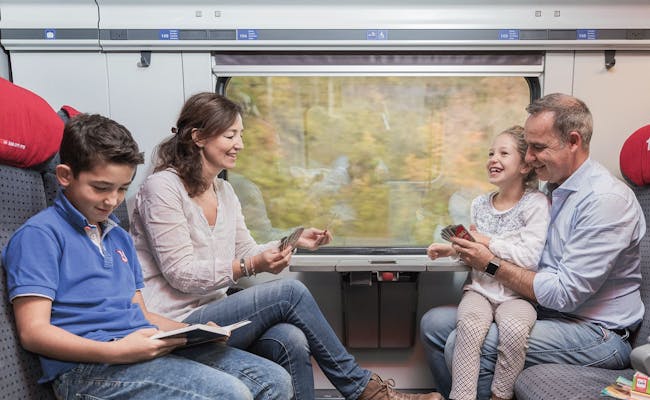 Traveling in First Class (Photo: Swiss Travel System)
Traveling in First Class (Photo: Swiss Travel System)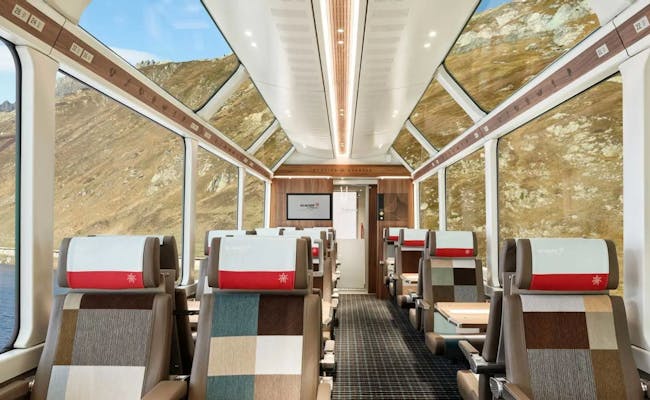 Glacier Express (Photo: Swiss Travel System)
Glacier Express (Photo: Swiss Travel System)In Switzerland, there are three types of trains: Intercity, Interregio, and regional trains. You can take a look at an overview map from SBB that shows the public transport in Switzerland.
The fastest way to travel is by Intercity trains, which stop at only a few stations. This makes it possible to get from St. Gallen to Lausanne with just 10 stops. In comparison, the Interregio stops six times just between St. Gallen and Zurich.
Interregio trains run between major cities, but stop at key stations along the way.
The regional trains run the slowest and make a stop at (what feels like) every station. Sometimes they run with stops on demand. This is mentioned either on a digital display on the train or during the announcement. So if you are traveling on a regional train, also known as "Bummler", you may have to press a button to get off at your desired stop.
Entire doctoral theses could be written, heated discussions held and complex studies drawn up on the punctuality of public transport in Switzerland. For the sake of simplicity, we'll confine ourselves for the moment to a somewhat casual statement that will interest you above all if you're pressed for time.
Basically, trains in Switzerland are very punctual
Roughly speaking, the punctuality of the SBB is around 90%. Playing poker and hoping that the train will wait for you will only lead to a pleasing result in 10% of cases.
Only four cities in Switzerland have significant streetcar networks: Zurich, Geneva, Bern and Basel. The streetcars are on the one hand responsible for the fine development in the cities and on the other hand for the development of the surrounding agglomerations. They often run at very frequent intervals - sometimes every two minutes - and in the case of Basel, they even extend beyond the national border.
Sometimes they seem to come out of nowhere, which can be dangerous, especially for the country bumpkins of this world. Especially near the main station, it's worth taking a second look behind before you cross the street. Streetcars have the right of way over pedestrians and accordingly prefer to ring the bell instead of braking. In the past, this has caused one or the other near cardiac arrest for me.
If you are aware of this, however, you should be able to live in peaceful coexistence with the streetcars.
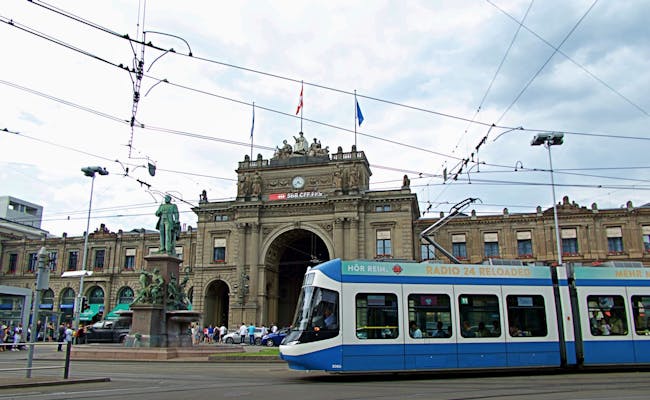 Tram in Zurich (Photo: Seraina Zellweger)
Tram in Zurich (Photo: Seraina Zellweger)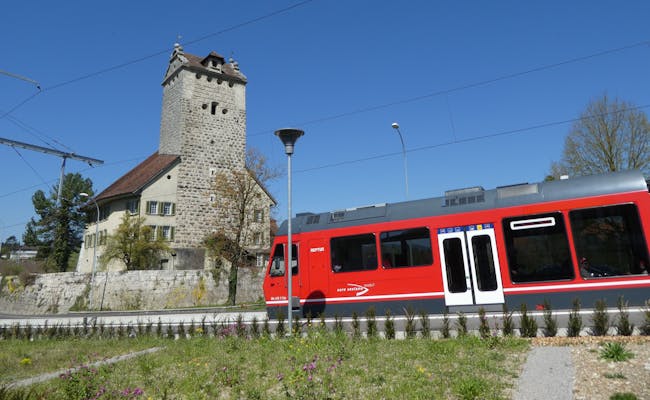 Tram in Switzerland (Photo: Seraina Zellweger)
Tram in Switzerland (Photo: Seraina Zellweger)Switzerland's 125 bus companies are responsible for regional services. The buses usually have one or more points of contact with rail traffic or with other bus lines. These points of contact are usually coordinated in terms of timetables, which makes it relatively easy to get from one place to the next in Switzerland without a car
In terms of frequency, the schedules vary widely. In the city centers, certain lines run every two minutes, while in less densely populated areas they run every 15, 30 or even every 60 minutes.
One of the most typical means of transport in Switzerland is the Postbus. Squeaky yellow and in single or double-decker versions, they reach even the furthest corners of the country. The more remote you are on the road, the greater the chance that you will encounter a Postbus somewhere.
They are especially common in hiking areas, but they also make their way through the traffic in city centers or agglomerations. The postbus network covers over 1600 km, which is equivalent to the distance from Anchorage in Alaska to La Paz in Bolivia.
As the name suggests, post buses were once responsible for transporting mail. In addition, postbuses also transported people, but at some point it became difficult to reconcile the different needs. Therefore, towards the end of the 20th century, the decision was made to completely separate passenger transport from postal transport. In remote areas, it can happen that the popularly used "Posti" still occasionally transports truths. As a rule, however, you are the only reason why the post bus is fetched from the garage.
Swiss Activities Tip: Postbuses are perfect if you plan a hike with different starting and finishing points. Often you can reach your starting point by public transport and at the end of your hike you can get on another post bus line. This way you don't have to choose a round trip or do the same route twice. It is best to check the timetable in advance, as the post buses do not always run regularly in remote regions.
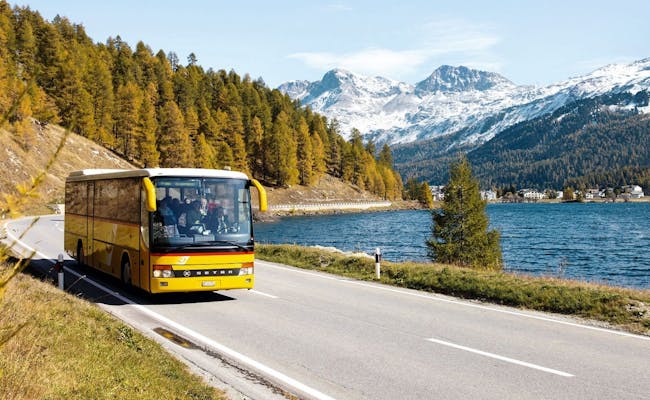 Postbus in Switzerland (Photo: Swiss Travel System)
Postbus in Switzerland (Photo: Swiss Travel System)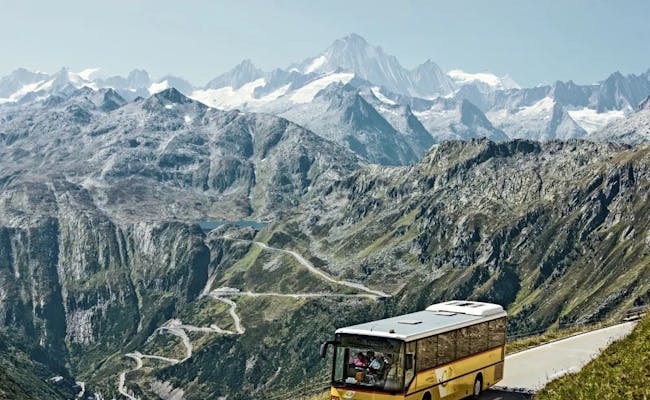 The PostBus is perfect for a hike with different start and end points (Photo: Swiss Travel System)
The PostBus is perfect for a hike with different start and end points (Photo: Swiss Travel System)Since the Swiss travel mostly by train, long-distance buses within the country are rather a side effect with a very meager offer. There are indeed several larger bus companies such as Flixbus, Eurobus and Eurolines, which operate without restrictions across the border. But within Switzerland, it is not quite easy to cover a distance by long-distance bus.
For example, international bus lines are not allowed to carry passengers who do not have their starting point or final destination abroad. And even within national borders, services are only permitted if they do not significantly compete with existing public transport. Whatever criteria are used to determine this..
Bus companies have to comply with a few more rules, which often prevent them from offering connections within Switzerland at all. For you, however, these rules are not relevant. Unless you are interested in the labor law requirements for bus drivers.
Sometimes you can find certain offers between bigger Swiss cities on Eurobus, but even then they only run a few times per day.
To be precise, very few cable cars are part of the public transport system and are not subsidized by the government like trains, buses, and postal cars. Nonetheless, they represent an important element for transportation. Particularly in tourist mountain regions, you’ll often find them as they offer a great opportunity to tackle certain strenuous ascents or descents during your hikes in Switzerland with significantly less effort.
Most cable cars accept common tourist passes and train tickets – such as the Swiss Travel Pass, Interrail, Half Fare Card, or General Abonnement (GA) – to a certain extent.
There are indeed cable cars that are fully integrated into public transport. These are the ones that serve areas that cannot be reached in any other way, for example, via a postal bus line or by train. You can find a list of all Swiss cable cars that are completely part of the public transport network and fall under the scope of the GA and Half Fare Card in this overview.
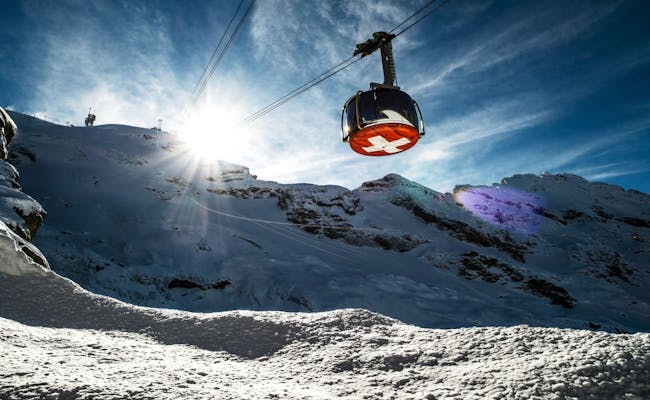 Rotair Titlis (Photo: Titlis Bergbahnen)
Rotair Titlis (Photo: Titlis Bergbahnen)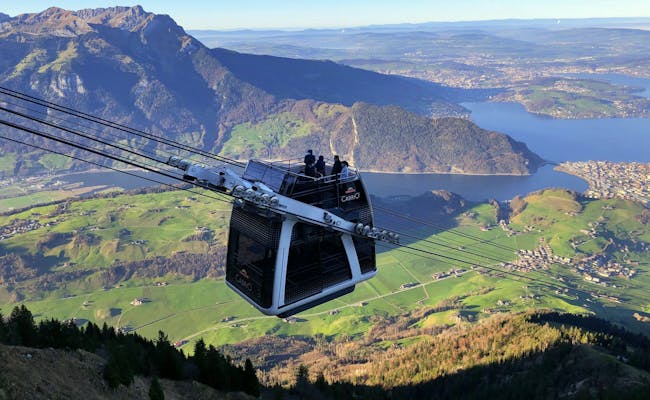 Cabrio cable car to the Stanserhorn (Photo: Seraina Zellweger)
Cabrio cable car to the Stanserhorn (Photo: Seraina Zellweger)Not only can you get around in Switzerland by land, but also by water. Most Swiss lakes and rivers have passenger ships, meaning you can take a boat ride. These ships are often used for leisure activities since they travel much slower than a train or a bus.
However, there are exceptions, like the ferry between Meilen and Horgen. This route is quite interesting for commuters, as the connection across the lake is significantly faster than a train or car ride around it. Generally speaking, use the boat when you have time, want to enjoy a beautiful view, or have always wanted to travel on a historic paddle steamer.
Swiss Activities Tip: Even though a boat trip is wonderful in nice weather, a rainy, overcast day can also be quite charming. First, there are usually fewer people around in bad weather, and second, the mystical atmosphere created by low-hanging clouds and dark mountain slopes can be very impressive.
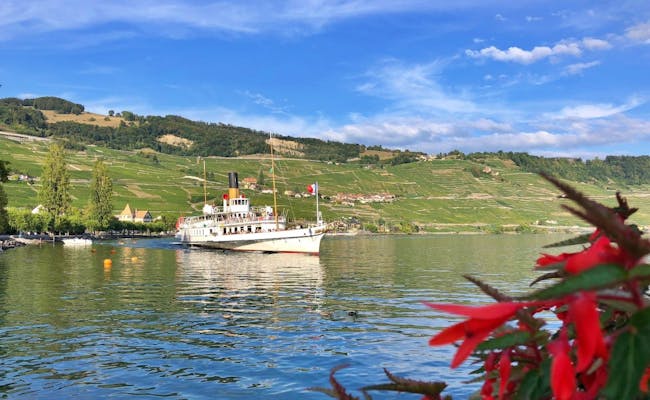 Steamship on Lake Geneva (Photo: Seraina Zellweger)
Steamship on Lake Geneva (Photo: Seraina Zellweger)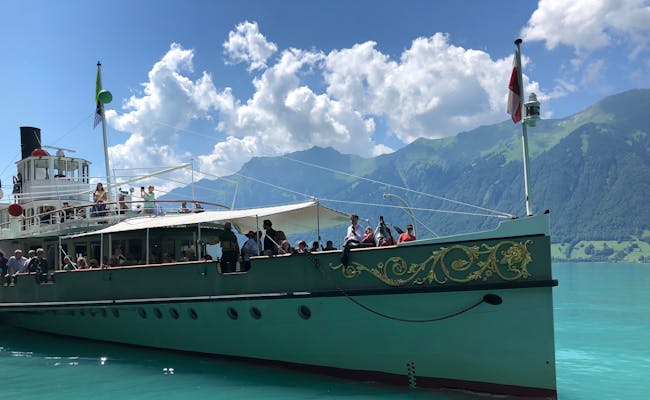 Steamship on Lake Brienz (Photo: Seraina Zellweger)
Steamship on Lake Brienz (Photo: Seraina Zellweger)